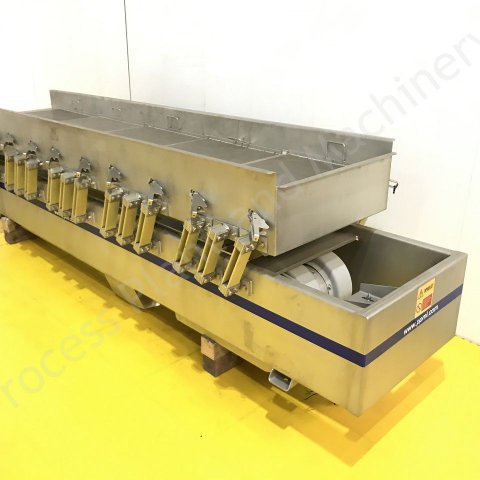A vibratory conveyor moves material from one part of the plant to another. The vibrating conveyor uses vibration to move material along a track, usually in a straight line. Some vibrating conveyors transport material out of an enclosed area, such as a silo or a hopper. Others can be set up to run through several sections of a plant. Vibrating conveyors are often called vibratory feeders and are sometimes called “vibrators.” The following information will provide insight into how these machines work and their capabilities.
Why Use a Vibration Conveyer?
There are many reasons why you might want to use a vibrator over other methods of moving materials around. A vibrating conveyor can reduce costs by eliminating the need for expensive equipment like rollers or belts. It also eliminates the cost of using the workforce to lift heavy loads or move bulky items manually. And finally, it provides a safe way to move materials without exposing employees to hazards.
What Types of Materials Can Be Transported on Vibration Conveyors?
Any material can be transported on a vibrational conveyor, including bulk goods (such as grains and powders), liquids, solids, wet/dry mix products, and highly corrosive substances. Most plants use a vibratory conveyor to process various types of material. For example, one common application is to move dry grain into a storage bin where it can later be processed. However, there are certain limits to what can be put on a vibrating conveyor. You should always check with the machine manufacturer to determine if it can handle the particular product you wish to place on the machine. For instance, if you plan to load a vibrator with steel balls, ensure the conveyor has enough clearance so the balls don’t get stuck or damage any parts inside.
What Size Machines Do I Need?
A vibrator typically comes in three sizes: small, medium, and large. These will depend on what you intend to do with the machine. Small units generally have less capacity than larger models; however, they tend to weigh slightly less and take up less space. They can be placed anywhere within reach of workers without requiring special precautions. Medium-sized models offer more capacity while weighing a little more than smaller versions. Larger units are often used to carry heavy weights at high speeds. They may also include features such as rubber bumpers to protect against damage when being loaded.
Which Applications Are Best Suited for Vibratory Conveyors?
Because of their versatility, vibratory conveyors are best suited for transporting material throughout a production facility—especially if you want to automate processes. As mentioned earlier, they can easily be designed to operate in multiple areas with minimal modifications. This makes them easy to implement in most situations. Additionally, these systems are relatively inexpensive compared to traditional methods of transportation.
Most commonly, they move items from one location to another. For instance, one common application uses a vibratory conveyor to collect loose grain from a floor surface and deposit it into a bin. Another popular use is to move a mixture of ingredients in a closed environment. Once again, the idea here is to automate laborious tasks so that your workers can focus on more important activities.








